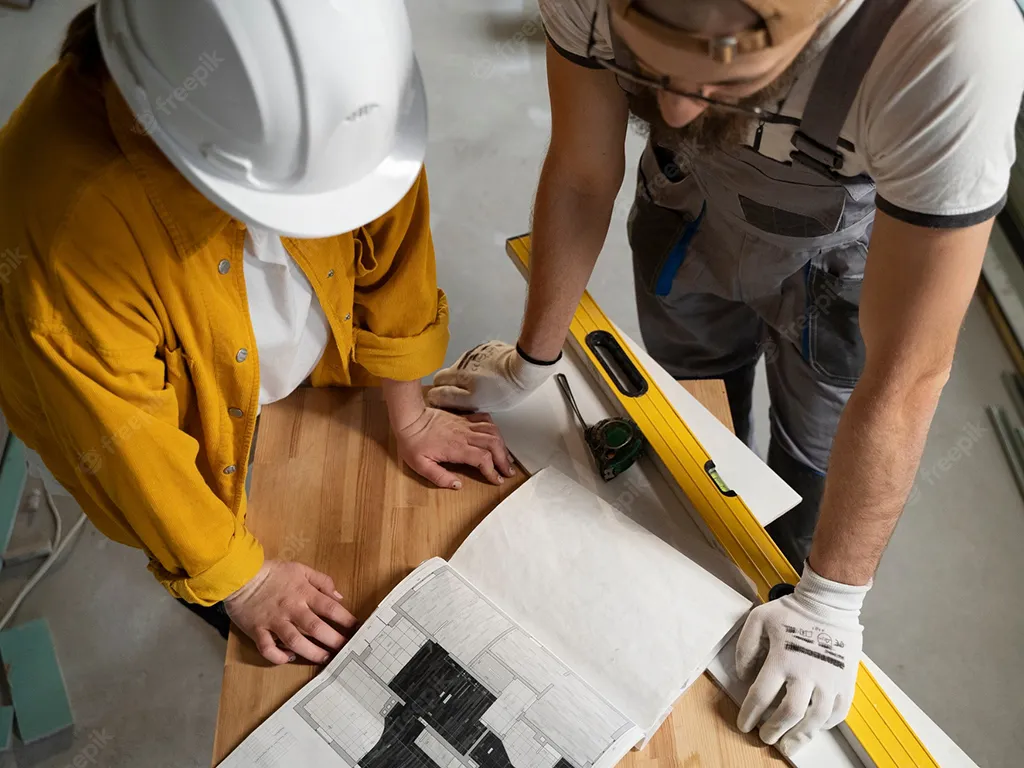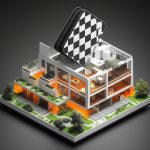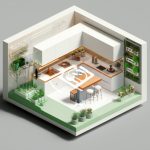Dive into the world of building performance! “Unlocking Scale: Defining Aggregation in Building Retrofits” is your roadmap to understanding how aggregation empowers building owners to join forces, save energy, protect the planet, and unlock a brighter future for their properties.
Defining Aggregation as it Relates to Building Retrofits
Imagine baking a cake. You wouldn’t just toss all the ingredients together without measuring. You gather your flour, sugar, eggs – each ingredient playing a crucial role. You measure carefully, maybe even consult a trusted recipe, to ensure everything comes together harmoniously.
That’s what “aggregation” is in the world of building retrofits, except instead of flour and sugar, we’re talking about data. It’s like piecing together a puzzle to reveal a building’s energy personality.
Consider all the information a building generates: energy use from heating and cooling systems, electricity consumption from lights and appliances, even how people are using the building. Aggregation takes all this scattered data – from sensors, meters, building management systems – and blends it into a comprehensive story.
This “data smoothie” provides building owners and energy managers with the insights they need to pinpoint areas for improvement. It’s like shining a spotlight on energy waste and discomfort, revealing:
- Energy Hogs: Are the heating systems working overtime? Are certain areas using more energy than others?
- Occupant Behavior: Are lights left on in empty rooms? Are people constantly battling the thermostat?
- System Performance: Are HVAC systems running efficiently, or are they due for an upgrade?
With this knowledge, they can make smart decisions about retrofits – those upgrades and improvements that make buildings more energy-efficient and comfortable. It’s about making sure those upgrades pack the biggest punch, whether it’s adding insulation, upgrading lighting, or fine-tuning existing systems.
But aggregation isn’t just about playing detective with past energy use; it’s also about predicting the future. By crunching historical data, we can create models that forecast energy consumption and pinpoint potential savings opportunities. Imagine having a crystal ball for your building’s energy use! This helps building owners and energy managers make proactive decisions, maximizing their investment in a greener, more sustainable future.
Key Points of Aggregation in Building Retrofits:
- Aggregation involves gathering and combining data from multiple sources, such as sensors, meters, and building management systems, to create a comprehensive picture of a building’s energy performance.
- This data provides insights into energy usage patterns, occupant behavior, and system performance, highlighting potential areas for improvement.
- Aggregation helps identify energy hogs, optimize occupant behavior, and assess the performance of HVAC systems.
- By understanding the root causes of energy waste and discomfort, building owners and managers can make informed decisions about retrofits to enhance energy efficiency and comfort.
- Aggregation also enables predictive analytics using historical data to forecast energy consumption and identify potential savings opportunities.
- This predictive capability supports proactive decision-making for a greener and more sustainable building future.
What is Building Retrofit Aggregation?
Building retrofits can make your building more energy-efficient and eco-friendly without breaking the bank. But sometimes the old ways of doing retrofits don’t cut it. That’s where “aggregation” comes in.
Think of aggregation as being a detective for your building’s energy use. It’s all about gathering clues from different sources – sensors, meters, and even your building management system. This data paints a complete picture of how much energy your building uses, how people use the space, and how well your systems are running.
By putting all these puzzle pieces together, building owners and managers can spot those energy hogs, encourage better energy habits among occupants, and make sure those HVAC systems are working like a charm.
Aggregation isn’t just about looking at the past, it’s about predicting the future too. Imagine being able to forecast your energy use and pinpoint potential savings – that’s the power of aggregation. It’s like having a crystal ball for your building’s energy consumption!
Key Lines:
- Building retrofits present an opportunity to enhance the energy efficiency of existing commercial structures, contributing to their long-term sustainability.
- Retrofitting involves modifying existing buildings to improve their energy performance, aesthetics, and comfort.
- Deep energy retrofits, which aim for significant energy savings, necessitate a departure from conventional retrofit approaches.
- Smart retrofitting integrates technology applications into retrofits, enabling automated monitoring and optimization of building operations.
Condensed & Organized Context:
Key Line 1: Energy Performance Enhancement
- Retrofitting existing buildings allows for upgrades to energy systems, such as lighting, HVAC, and building envelope, resulting in improved energy efficiency.
- This contributes to reduced operating costs, increased asset value, and a reduced environmental footprint.
Key Line 2: Building Upgrades and Improvements
- Retrofitting encompasses a wide range of upgrades, including:
- Energy efficiency enhancements
- Water conservation measures
- Building automation controls
- Structural improvements
- These upgrades address comfort, accessibility, and aesthetics, improving the overall quality of the building.
Key Line 3: Deep Retrofits for Energy Efficiency
- Deep retrofits focus on achieving substantial energy savings, typically exceeding 50%.
- They involve comprehensive building energy audits, optimization of multiple systems, and integration of renewable energy sources.
- Deep retrofits require collaboration between technical experts, contractors, and building owners to achieve optimal results.
Key Line 4: Smart Retrofit Integration
- Smart retrofitting incorporates sensors, controllers, and data analytics to automate building operations and enhance efficiency.
- This technology enables real-time monitoring, predictive maintenance, and optimized energy usage.
- Smart retrofits can lead to increased occupant comfort, reduced operational costs, and a smaller carbon footprint.
Unique Insights:
- The context does not delve into the financial incentives or government programs available for building retrofits.
- Exploring these aspects can provide insights into cost-saving measures and potential funding opportunities for retrofit projects.
- Additionally, examining the impact of retrofits on occupant health and well-being could offer a unique perspective on the benefits of building upgrades.
Here’s a quick rundown of the benefits:
| Benefit | Description |
|---|---|
| Insightful Energy Usage | Aggregation reveals how, when, and where your building consumes energy, highlighting areas for improvement. |
| Optimized Occupant Behavior | Understand how occupants impact energy use and encourage energy-saving habits. |
| Enhanced HVAC Performance | Assess the efficiency of your heating, ventilation, and air conditioning systems, identifying areas for optimization. |
| Predictive Analytics | Forecast energy consumption, identify potential savings opportunities, and make proactive decisions about energy management. |
| Sustainable Building Future | By making smarter decisions based on data, you contribute to a greener and more sustainable future for your building and the planet. |
Why is Aggregation Important for Deep Energy Retrofits?
Think of aggregation as putting together a giant puzzle of your building’s energy use. You’ve got pieces of information scattered everywhere – energy bills, thermostat settings, maybe even data from smart appliances. Aggregation brings all that together in one place, giving you a complete picture of how energy flows through your building.
This “big picture” view is super important for deep energy retrofits. These aren’t your average, run-of-the-mill upgrades. We’re talking major overhauls that significantly cut energy waste and make your building greener. To do this right, you need to know exactly where to focus your efforts.
Let’s say your building has some “energy hogs” – maybe an old heating system or lights that are always on. Aggregation helps you spot these culprits by highlighting areas with unusually high energy consumption. Armed with this knowledge, you can prioritize upgrades that deliver the biggest bang for your buck.
But it’s not just about the equipment. Aggregation also sheds light on how people use your building. Are there times when rooms are empty but the lights are still blazing? Is the AC cranked up when everyone’s gone for the day? By understanding occupant behavior, you can implement simple changes – like automated lighting schedules or smart thermostats – that make a big difference in energy savings.
Key Lines:
- Deep energy retrofits, involving a holistic approach, aim to reduce energy consumption by at least 50% through various measures like envelope upgrades, electrification, and energy conservation.
- While deeper retrofits provide more electrification opportunities and economic benefits, their high upfront costs may hinder financing solely through energy savings.
- Despite significant co-benefits beyond energy savings, quantifying and standardizing these benefits pose challenges for deep retrofits.
- Deep energy retrofits involve a Level III energy audit and vary in specifications based on climate zones.
Condensed & Organized Context:
Key Line 1: Deep energy retrofits seek to significantly reduce energy usage (minimum 50%) by optimizing the building system, including occupants and equipment, through envelope improvements and reduction of energy transfer.
Key Line 2: Deep retrofits offer greater opportunities for electrification and financial benefits but face financing challenges due to high upfront costs. However, they provide additional advantages, such as enhanced building performance and occupant satisfaction.
Key Line 3: Quantifying non-energy benefits like improved indoor air quality and occupant well-being remains a challenge, making it difficult to fully capture the value of deep retrofits.
Key Line 4: Deep energy retrofits require detailed planning, including a Level III energy audit and consideration of climate-specific factors.
Unique Insights:
- Long-term Financing Options: Explore innovative financing models that can alleviate the upfront cost burden of deep retrofits.
- Co-benefits Quantification: Develop standardized methodologies to measure and quantify the non-energy benefits of deep retrofits, enabling a more comprehensive assessment of their value.
- Climate-Specific Retrofits: Emphasize the importance of tailoring deep retrofit measures to different climate zones to maximize effectiveness and ROI.
- Occupant Engagement: Highlight the role of occupant engagement and education in ensuring the long-term success of deep retrofits and optimizing energy savings.
Here’s a table that breaks down the benefits:
| Benefit | Description |
|---|---|
| Identify Energy Hogs | Pinpoint equipment or areas using excessive energy, allowing you to target upgrades effectively. |
| Optimize Occupant Behavior | Understand how people use the building to implement behavioral changes or automated systems that reduce energy waste. |
| Data-Driven Decision Making | Leverage historical data for predictive analytics, forecast energy consumption, and make informed decisions about future upgrades and operational adjustments. |
Aggregation isn’t just about collecting data – it’s about using that data to make smart decisions. It empowers you to transform your building from an energy guzzler into a model of efficiency.
Want to learn more about how building aggregation unlocks energy efficiency? Check out this article: How Building Aggregation Unlocks Retrofits & Energy Efficiency
What are the Benefits of Aggregating Building Retrofits?
We’ve talked about why making your buildings more energy-efficient is a good idea, but what about tackling a bunch of them at once? This is where aggregating building retrofits comes in – it’s like buying in bulk, but for building upgrades! Let’s dive into why this approach could be a game-changer for your properties.
Key Lines:
- Existing building retrofits offer significant potential for reducing energy consumption and greenhouse gas emissions, contributing to sustainability goals.
- Deep energy retrofits, involving comprehensive upgrades and energy conservation measures, can achieve significant energy reductions and improve building performance.
- Smart retrofitting approaches utilize advanced technologies to enhance building efficiency and occupant comfort, transforming existing structures into smart buildings.
- Retrofitting existing buildings presents challenges, including cost, technical complexity, and potential disruption to operations, but these can be overcome through careful planning and stakeholder collaboration.
Condensed & Organized Context:
Retrofitting for Sustainability
- Retrofitting existing buildings offers significant opportunities to reduce global energy consumption and greenhouse gas emissions.
- This approach promotes sustainability by upgrading aging buildings and enhancing their energy performance at a lower cost and with higher uptake rates than new construction.
Deep Energy Retrofits for Enhanced Performance
- Deep energy retrofits aim to achieve at least a 50% reduction in energy usage.
- They typically involve building envelope upgrades, electrification, and energy conservation measures.
- These retrofits improve building efficiency and reduce operating costs, contributing to long-term savings.
Smart Retrofitting for Advanced Functionality
- Smart retrofitting incorporates advanced technologies to enhance building performance and occupant experience.
- Measures include improving envelope insulation, installing energy-efficient windows, and implementing smart lighting and HVAC systems.
- These technologies create smart buildings that optimize energy usage, improve comfort, and enhance indoor air quality.
Overcoming Challenges in Retrofitting
- Retrofitting existing buildings presents challenges, such as high costs, technical complexity, and potential disruption to operations.
- Careful planning, stakeholder collaboration, and government incentives can mitigate these challenges and ensure successful retrofit projects.
- Collaboration between architects, engineers, contractors, and building owners is crucial for effective implementation.
Unique Insights
- Integrating renewable energy sources into retrofit projects: Exploring the potential of incorporating solar panels, geothermal heat pumps, and other renewable technologies into retrofits to further reduce energy consumption and promote sustainability.
- Data-driven decision-making for retrofitting: Analyzing energy consumption patterns and building performance data to identify areas for improvement and optimize retrofit strategies.
- Retrofitting for resilience: Considering the impact of climate change and natural disasters, and incorporating resilience measures into retrofit projects to enhance building durability and occupant safety.
Think Big, Save Big:
Imagine you’re renovating your kitchen – you wouldn’t buy just one cabinet, right? You’d go for the whole set. Aggregating retrofits works the same way. By upgrading multiple buildings at the same time, you get serious discounts on everything from materials like insulation and LED lights to labor costs for contractors and designers. It’s simple economics – the more you buy, the better the deal!
One Team, Streamlined Dream:
Juggling multiple renovation projects can feel like herding cats. Aggregating retrofits lets you hire one project management team to oversee everything, eliminating confusion and wasted effort. This centralized approach ensures a consistent strategy across all your buildings, making the whole process smoother and less stressful.
Energy Efficiency Power-Up:
Upgrading your buildings piecemeal might seem easier, but tackling them together allows you to create a comprehensive energy-saving strategy. Imagine swapping out old, drafty windows in one building, installing energy-efficient heating and cooling in another, and then brightening up a third with LED lighting. These individual upgrades are great, but imagine the impact of doing them all at once across multiple buildings! You’ll slash your energy bills and reduce your carbon footprint significantly.
Happy Tenants, Happy You:
Let’s face it, nobody likes a drafty office or flickering lights. Retrofitting your buildings with an eye on comfort creates a more pleasant and productive environment for everyone. Think improved temperature control, better air quality, and optimal lighting – these upgrades can make a world of difference for your tenants and boost your building’s appeal to potential renters.
Boosting Your Bottom Line:
Energy-efficient buildings are becoming increasingly desirable in today’s market. By investing in comprehensive retrofits, you’re not just improving your buildings, you’re increasing their value and marketability. Potential buyers and renters love to see a commitment to sustainability, and these upgrades send a clear message that you’re invested in the future of your properties.
In a Nutshell:
- Cost Savings: Bulk buying for the win! Get better prices on materials, labor, and design.
- Simplified Process: No more juggling multiple contractors and schedules – one team, one plan.
- Energy Efficiency Boost: Maximize energy savings by strategically upgrading multiple buildings.
- Enhanced Comfort: Create a more inviting and productive environment for tenants.
- Increased Property Value: Attract buyers and renters with eco-friendly and comfortable buildings.
Aggregating building retrofits is a smart move for property owners looking to save money, streamline operations, and contribute to a greener future. It’s a win-win for your wallet and the environment!
Considering expanding your real estate portfolio with energy-efficient options?
- For an extended living space, consider adding a detached garage next to your manufactured home.
- Explore options for cozy one-bedroom mobile homes for a comfortable and affordable living solution.
- Discover stylish and budget-friendly ideas for your home with home decor inspiration for South Africa.
- Dark Backsplash Ideas: Drama and Depth for Your Kitchen - November 7, 2025
- Black Backsplash Tile: Find The Perfect Style For Your Kitchen - November 6, 2025
- Black Backsplash With White Cabinets: A Bold Kitchen Design - November 5, 2025










